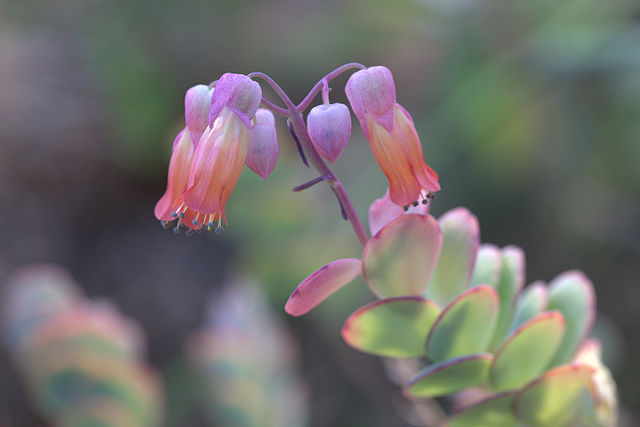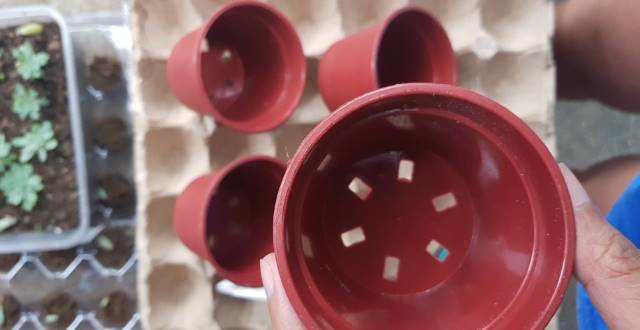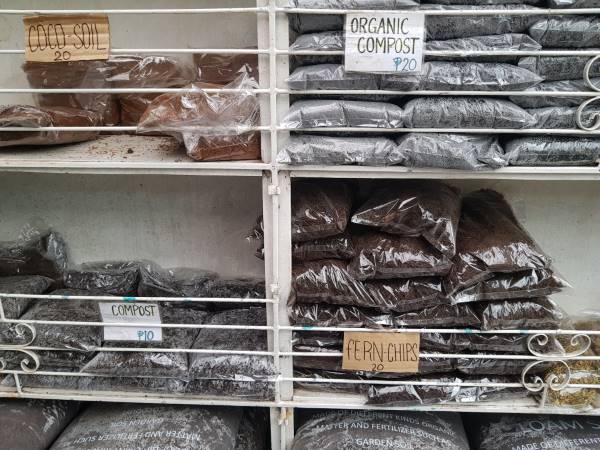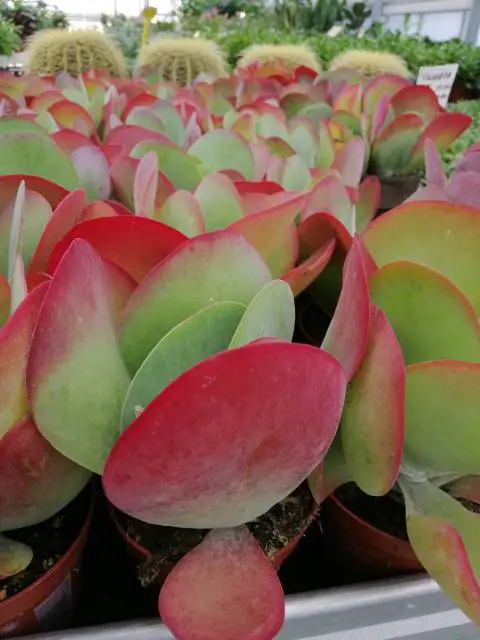Thinking of some amazing plants that are easy to care for and hard to kill, Kalanchoe succulents surely come in our minds. These plants are highly appreciated for their beauty and low maintenance needs and popularly grown as houseplants.
One of the amazing Kalanchoes is Kalanchoe marnieriana. This succulent was named by Herman Jacobson in the honor of French botanical explorer Julien Marnier Lapostolle. Kalanchoe marnieriana is closely related to Kalanchoe fedtschenkoi and Kalanchoe laxifolora and is also called Bryophyllum marnierianum. It is a beautiful evergreen succulent that is just perfect for succulent gardens and Mediterranean gardens. It is also used in container gardens to make awesome floral arrangements.
General Features of Kalanchoe marnieriana
Kalanchoe marnieriana has a robust, upright to spreading growth habit which eventually makes it a dense plant. It is a grey leafed subshrub succulent with a tall vertical stem that grows to a length of 12 to 18 inches (45 cm) and 2 to 3 feet wide. It has flat, thin, blue-green, or grey-toned round leaves arranged opposite to each other facing towards the tips of branches typically resembling the pages of a book.
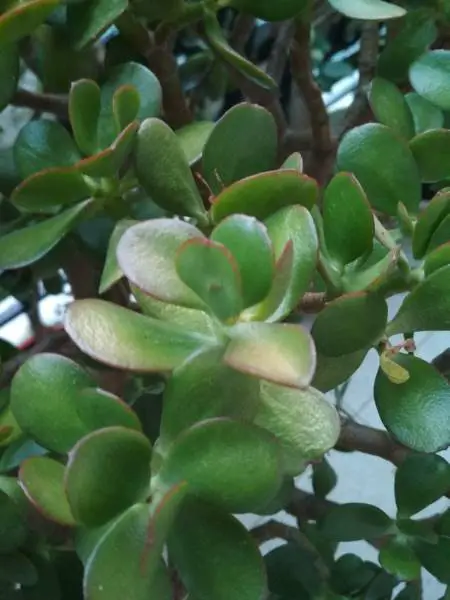
The leaf edges turn adorable red wine during the winter season if grown in bright sunlight. Like other Kalanchoe succulents, Marnier’s Kalanchoe occasionally sprouts new plantlets along the margins of leaves which eventually fall off and give rise to all-new succulents. Flowers are dangled, large, coral, and bell-shaped.
The rose-pink to red flowers emerge throughout the years from the stalks at the end of branches. Marnier Kalanchoe is summer dormant and the flowers bloom in the winter season. It looks very nice during winter when the flowers emerge above the pink foliage. This succulent adds great height to the container gardens.
Origin and Habitat
This succulent typically comes from the moist rocky places in the northeast of Madagascar.
Is Kalanchoe marnieriana an indoor or outdoor succulent?
Kalanchoe marnieriana can grow both indoors and outdoors as long as the temperature remains warm and doesn’t go below freezing.
Read more about indoor or outdoor Kalanchoe Succulent Care:
http://kalanchoe-succulent.com/is-kalanchoe-an-indoor-or-outdoor-plant/
How to take care of Marnier’s Kalanchoe?
Marnier’s Kalanchoe is an amazing succulent that can grow to be beautiful if taken care of very well. It requires similar care like many other Kalanchoes.
Light requirements
Marnier’s Kalanchoe requires partial sun to partial shade. They need a lot of lighting to avoid the etiolation of stems. It is always recommended to keep these succulents under sunlight in the early morning or late in the afternoon when the sunlight is not too intense.
Keep the indoor plants for 5 to 6 hours near a south-facing window during the winter season. It is also noted that Marnier’s Kalanchoe can tolerate shade much better than other succulents. Avoid keeping the plants under direct sunlight it can cause burning of leaf margins. When the light is too intense the leaf spots will become more prominent and noticeable.
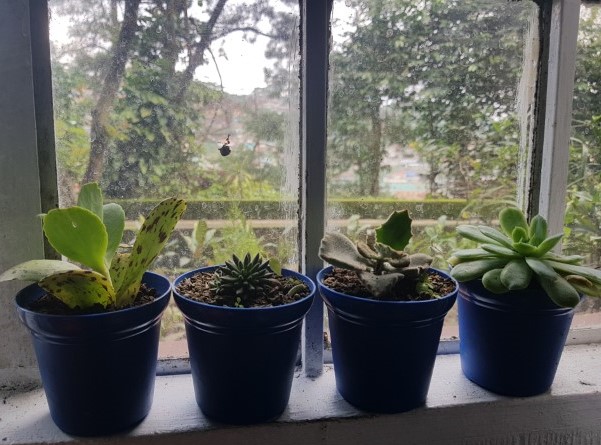
Temperature needs
Marnier’s Kalanchoe grows better at warm locations. The need temperature in a range of 20 to 29 ºC for their optimal growth. This succulent is sensitive to a temperature below 0 ºC. Avoid exposure to temperatures below 0 ºC for a long time as it can kill the succulent.
Hardiness zones: It is best to grow in USDA hardiness zones 9a to 11b where it is grown as a hardy succulent.
Kalanchoe marnieriana is not cold hardy to zones below 9a, if you live in a very cold area where the temperature goes below 20 ◦F (-6.7 ◦C), it is better to plant these succulents indoors to prevent from freezing damage. You can also move your plants indoors when the temperature is too low. The room temperature will be just fine for the growth of Marnier’s Kalanchoe indoors during winter. If the plants get enough sunlight indoors, they will grow healthy and happy.
While in zones where the temperature is relatively warm it is best to grow Marnier’s Kalanchoe outdoors.
How often should Marnier’s Kalanchoe be watered?
Marnier’s Kalanchoe has typical watering needs like other succulents. It is quite a drought-tolerant and needs less watering. Water more often during the summer season and less frequently during the winter season.
Marnier’s Kalanchoe should be watered using the ‘soak and dry method’. Water the soil well until it becomes moist and let it dry out completely before the next watering. Be very careful to avoid overwatering, do not let the water standing in the soil it will likely encourage fungal growth and develop root rot.
What should be the frequency of watering? The frequency of watering depends on several factors such as growth medium, temperature, pot size, etc. It is generally recommended to water once a week. However, when the temperature is too warm or the potting medium drains very fast, you may need to water than once a week. The time between waterings depends on how soon the soil dries out.
How to water Marnier’s Kalanchoe? Water should be applied directly to the potting medium and avoid spilling water on the foliage it may cause rotting.
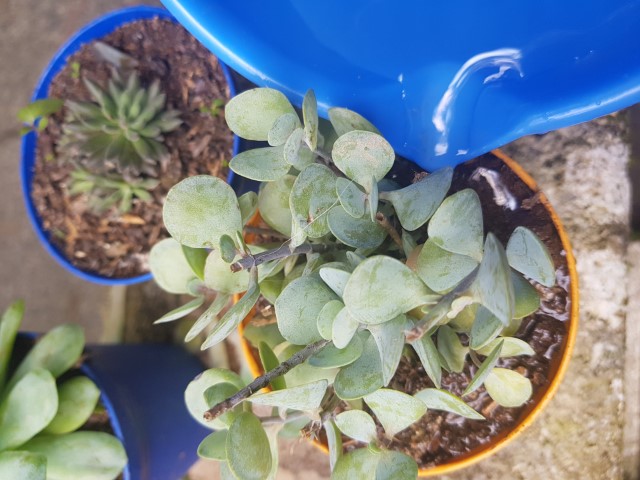
What type of potting mix should be used?
The potting mix for Marnier’s Kalanchoe should be relatively rich in organic matter with good drainage potential. The ideal potting medium should be a mix of clay, sand, pumice, and perlite. The standard commercial succulent or cactus potting mix can also be used by adding a little extra sand to improve the drainage.
What happens if the soil medium has poor drainage? If the potting mix has poor drainage it will cause waterlogging that can quickly cause rotting of the root system.
The potting mix can be disinfected to prevent the pathogens from proliferation and causing root decay.
Does Marnier’s Kalanchoe need fertilizers?
Marnier’s Kalanchoe grows gets enough nutrients from the potting medium and doesn’t need additional fertilizers. However, it won’t mind an extra dose of nutrients.
You can fertilize your plants with a balanced liquid fertilizer during the summer season to supply some extra nutrients to your succulents. It will ensure more blooming and better growth of the succulent in the next season.
You can also use slow-release fertilizer pellets to feed your plants. Feed your plants biweekly and avoid an extra dose of fertilizers.
Does Kalanchoe marnieriana require grooming?
Grooming is generally not required for Marnier’s Kalanchoe. However, you can groom your plants in certain situations e.g., when they are attacked by insect pests, for removal of spent or dead blooms, or dead leaves. The removal of spent blooms and dead leaves will encourage better growth and more blooming in the next season.
Grooming will keep your succulents look neat and tidy and maintain their healthy growth. Use clean sharp gardening shears for snipping off the plant parts. Make sure you only remove the unwanted parts. Avoid excessive pruning it will weaken the succulents and they will no longer grow healthy.
How to propagate Kalanchoe marnieriana?
Marnier’s Kalanchoe can be easily propagated by stem or leaf cuttings.
How to take cuttings? Select only healthy and disease-free leaves for taking the cuttings. Remove the stem or leaves from the mother plant with a sterilized sharp knife or scissors. Remove the leaves in such a way that no part of it remains attached to the mother plant. Allow the cuttings to develop callous for 2 to 3 days at a dry and warm place before planting. Don’t keep the cuttings for too long as they will remove all the moisture and will fail to propagate.
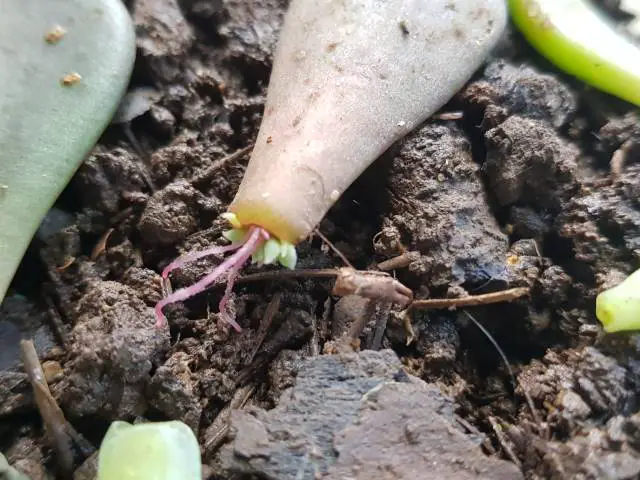
Take a well-draining potting mix with more coarse sand. Place the cuttings in the moist potting mix and gently firm the soil around the cuttings.
In the beginning, keep misting the cuttings 4 to 5 times a day. Water the soil well to keep it moist. Keep the pots near a bright sunny window for plenty of light exposure. Avoid exposure to bright direct sunlight until the plants get established in the new medium.
Does Marnier Kalanchoe need repotting?
This succulent doesn’t need frequent repotting. As a general rule, every Kalanchoe succulent should be repotted every 2 years. But repotting is essential when you buy a new succulent from the store or when your plant is prune to insect pest infestations, or if the potting mix has poor drainage potential.
It is advised to shift your succulents into new pots when you purchase them from a store. The succulents we buy from the markets are usually potted in low quality, cheap black containers. You must shift your plants in better pots.
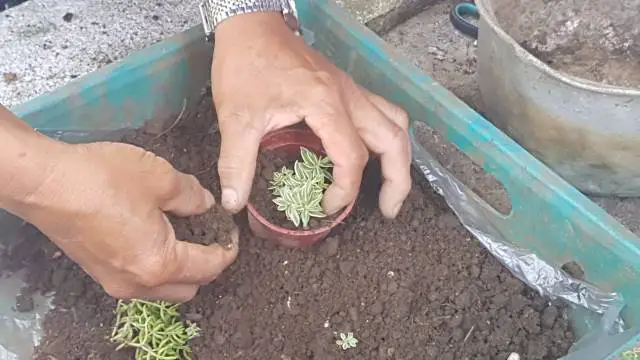
In case your succulent is infested by insect pests you must transfer it in new containers with clean growth medium to get rid of insect pests. Repotting is also necessary when the potting medium has poor drainage. In such a case you should repot your succulents in a better and fertile potting medium.
How to repot? Gently remove the succulents from the previous potting medium without damaging the plant roots. Shake off the succulent to remove the excess soil and debris adhering to the roots. Place the plant in fresh potting medium and avoid watering for the first few days to let the roots recover.
Once the plant becomes established you can provide regular watering and light to the succulent.
Which pots are suitable for growing Marnier’s Kalanchoe?
Avoid using glass or black plastic pots. These pots have poor drainage and the black pots absorb more heat. Use terracotta pots or glazed ceramic pots because they give excellent results.
Diseases and pests
Kalanchoe marnieriana is usually attacked by mealybugs and mollusks. Mealybugs are creepy white little insects that cause falling off of the leaves, wilting of blooms, and also encourages the fungal growth.
Mollusks are soft-bodied marine animals covered with a shell. The common mollusks attacking these succulents include slugs and snails.
Snails and slugs are aquatic/terrestrial creatures that can also be found on the land and they both can go hand in hand. They can devour the section of leaves and stems in no time and also permanently disfigure the leaves of Marnier’s Kalanchoes.
Other problems of Marnier’s Kalanchoe includes overwatering. These succulents just hate overwatering, it will cause root rot and fungal growth. Therefore, make sure never overwater your succulents. Always allow the water to drain out properly before watering again.
How to get rid of insect pests?
To get rid of mealybugs rub the succulents with 70% isopropyl alcohol. If you don’t want to use alcohol, you can also use the neem oil spray or a nontoxic insecticidal spray to throw away the creepy mealybugs.
To prevent slugs and snails from attacking the succulents try placing some crushed eggshells or diatomaceous earth around the base of the plants.
Which plants can be grown along with Marnier’s Kalanchoe
Marnier’s Kalanchoe pairs well with Graptoveria ‘Fred Ives’. Both succulents can be planted together to enhance the beauty of succulent gardens.
Is Kalanchoe marnieriana Toxic?
It can be toxic to pet animals and also children. Keep it away from the reach of your pets and toddlers. If your pets accidentally chew up a part of Marnier’s Kalanchoe consult an expert Veterinarian or call the poison control center for help.
Where I can buy Marnier’s Kalanchoe?
There are plenty of options from where you can buy Marnier’s Kalanchoe. You can buy this lovely succulent from any local nursery or plant market. You can also buy Marnier’s Kalanchoe online. It depends on the availability of the plant on the online shopping sites. If it is available on Amazon and Etsy shopping websites, you can easily order online. They will deliver this amazing succulent on your doorstep.
Just visit the nearby nursery or online shopping websites to grab a few Marnier’s Kalanchoes for your succulent gardens.
Enjoy Planting!

